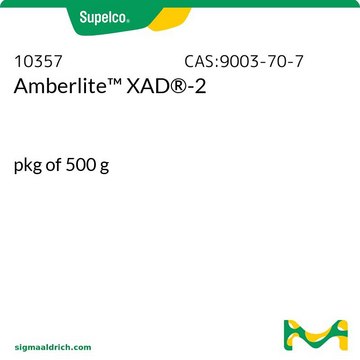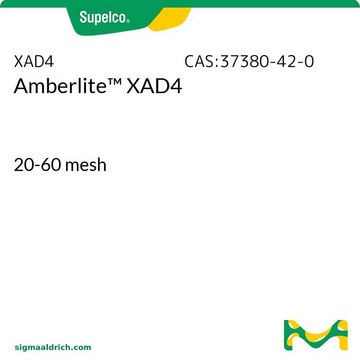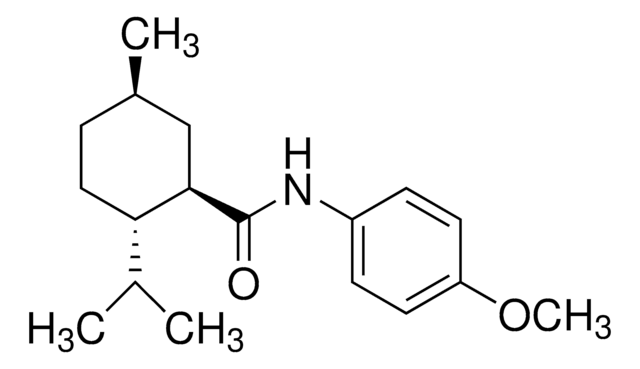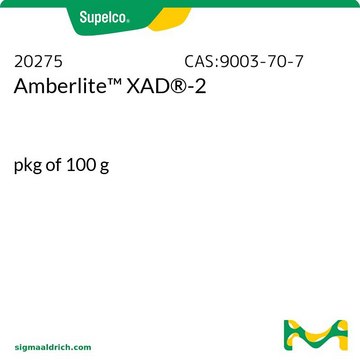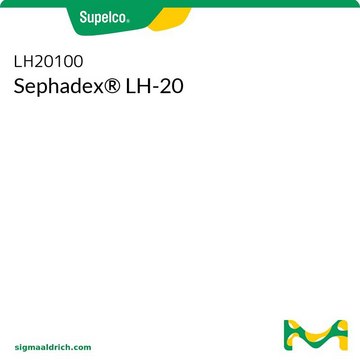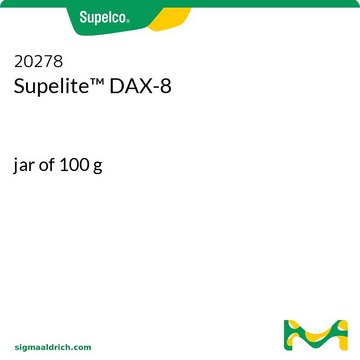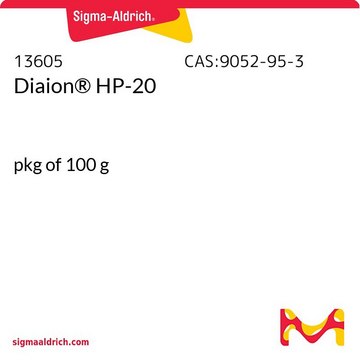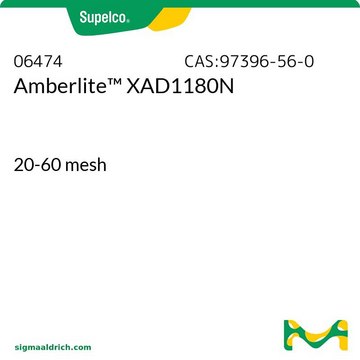XAD7
Amberlite™ XAD7HP polymeric adsorbent
20-60 mesh
Synonym(s):
weak anion exchange resin
Sign Into View Organizational & Contract Pricing
All Photos(1)
About This Item
Recommended Products
Product Name
Amberlite™ XAD7HP, 20-60 mesh
vapor density
<1 (vs air)
Quality Level
vapor pressure
17 mmHg ( 20 °C)
form
beads
autoignition temp.
800 °F
technique(s)
LPLC: suitable
surface area
380 m2/g
matrix
acrylic
matrix active group
polymer
particle size
20-60 mesh
560-710 μm
pore size
0.5 mL/g pore volume
300-400 Å mean pore size
separation technique
reversed phase
Looking for similar products? Visit Product Comparison Guide
General description
Nonionic macroreticular resin that adsorbs and releases ionic species through hydrophobic and polar interactions; usually used under isocratic conditions.
Application
Weakly polar adsorbent resin for compounds up to 60,000 MW: insulin, fulvic and humic compounds, dry waste, organic removal and recovery, and antibiotic recovery.
Other Notes
Moderately polar acrylic resin
Two particle sizes are available:
Mesh 20-60 is Cat. No. XAD7
Mesh 20-50 is Cat. No. 06445
Mesh 20-60 is Cat. No. XAD7
Mesh 20-50 is Cat. No. 06445
Legal Information
Amberlite is a trademark of DuPont de Nemours, Inc.
Storage Class Code
11 - Combustible Solids
WGK
WGK 3
Flash Point(F)
Not applicable
Flash Point(C)
Not applicable
Personal Protective Equipment
dust mask type N95 (US), Eyeshields, Gloves
Choose from one of the most recent versions:
Already Own This Product?
Find documentation for the products that you have recently purchased in the Document Library.
Yixiang Liu et al.
Journal of agricultural and food chemistry, 65(15), 3179-3189 (2017-04-01)
Whether all dietary polyphenols nourish the eyes via oral supplementation is controversial. Given that passage of dietary polyphenols across the blood-retina barrier (BRB) is the precondition for polyphenols to exhibit ocular benefits, the BRB permeability of polyphenols was assessed in
Johanna Josefine Ostberg-Potthoff et al.
Nutrients, 11(5) (2019-05-30)
An activity-guided search for compounds influencing glucose metabolism in extracts from aronia (Aronia melanocarpa, A.), pomegranate (Punica granatum L., P.), and red grape (Vitis vinifera, RG) was carried out. The three extracts were fractionated by means of membrane chromatography to
Boyu Dong et al.
International journal of molecular sciences, 20(6) (2019-03-25)
Brunfelsia calycina flowers lose anthocyanins rapidly and are therefore well suited for the study of anthocyanin degradation mechanisms, which are unclear in planta. Here, we isolated an anthocyanin-β-glycosidase from B. calycina petals. The MS/MS (Mass Spectrometry) peptide sequencing showed that
Mohamad Shazeli Che Zain et al.
Antioxidants (Basel, Switzerland), 9(4) (2020-04-23)
Oil palm (Elaeis guineensis Jacq.) leaves (OPL) are widely available at zero cost in Southeast Asia countries, especially in Malaysia and Indonesia due to large scale oil palm plantations. OPLs contain a large amount of flavonoids in particular flavonoid C-glycosides
Guillermo Schmeda-Hirschmann et al.
Scientific reports, 10(1), 7070-7070 (2020-04-29)
The Chilean hazelnut (Gevuina avellana Mol., Proteaceae) is a southern South American nut consumed as a snack and included in different preparations of traditional Chilean cuisine. Recently we described the fatty acid profile, oxylipins, phenolic compounds, as well as the
Our team of scientists has experience in all areas of research including Life Science, Material Science, Chemical Synthesis, Chromatography, Analytical and many others.
Contact Technical Service
